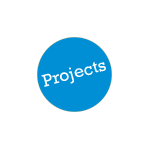
CLICK ON IMAGES TO
VIEW PHOTO GALLERY
VIEW PHOTO GALLERY
![]() MESSAGES FROM PARADISE #2
MESSAGES FROM PARADISE #2
Morocco-Netherlands: The permanent longing for elsewhere
Interactive video-installation and webproject
Planned realization in spring 2009
(c) Daniela Swarowsky
The Moroccans of the Netherlands regularly travel to Morocco on summer vacation, meet relatives and make friends there. But both sides appear to find it difficult to communicate or transmit the experiences of living as a migrant (or a migrant's child) on the one hand, and of dreaming of migration, on the other. On either side, the far side of the Mediterranean appears as a paradise, a place where life is good and dreams are fulfilled. This is not simply because people would lie about their experiences (although many probably do). Especially those who dream of migration depend on the information and images they get from the media and their peers abroad. Often, without putting into words, a specific image of life in Europe emerges from the holiday encounters in a way that nourishes, probably unwillingly, the idea of ‘paradise West' in the heads of the ones staying behind. That might be a too one-sided and naïve perspective – so let's move deeper into this subject!
Is this because migrants don't like to admit the hardship of their lives, or because young people don't wish to hear bad news about life in Europe, or because on holiday people want to forget their worries of the rest of the year and simply wish to feel good and enjoy their vacation ‘home'? In any case there seems to be a lack of communication between people who dream of emigrating to Europe (and they are the majority of young Moroccans) and the migrants and their children, who have already made the step.
Messages from Paradise #2 tries to create a different context, a different way to search life on ‘the other side'. With its focus on longing and dreams, Messages from Paradise is a work which goes beyond one's borders in order to expand one's horizon, about choices for a better life, the promises of modernity. But it is also a work about myths and fantasies, and the frustration and disappointment that people unavoidably feel when fantasies face reality. It confronts and questions the many myths surrounding migration - both the ones that tell of the success as well as those who state the failure of migrants - and asks young people to tell their own stories and dreams, to ask their questions, and to comment and answer the stories and dreams of others.
This is why Messages from Paradise is designed as a fictive dialogue: People speak for themselves, alone to the camera, perhaps with an imagined counterpart in mind, but never face to face. Their stories, questions, and comments only become a dialogue through the fictional medium of a video installation that brings together people and locations that otherwise cannot come together, and relate stories to each other that otherwise are not told together. On every step, individual monologues merge into a fictive dialogue by the force of the imagination: The imagination of the youths who dream of better life, the imagination of migrants and their children who put their stories in relation to their own lives, and the imagination of all viewers of the installation who eventually perceive a greater story on the basis of the individual voices. Like all fiction, its power is in the way it allows people to actively think about the human condition: what it means to have a home, to dream, to travel and to belong. But unlike the popular jargon of intercultural dialogue, it does not promise a consensus nor a common ground. Instead, it promises something greater: the possibility to move beyond one's immediate experience and see oneself in others and them, in turn, in oneself.
With this installation, I continue a line of experiments in reaching out to different audiences and building bridges between the art world and communities that rarely frequent museums and art events. In this installation, I try to develop the piece in stages, letting the audience of the first stage contribute to the next one. The first stage of the installation will be developed with participation of a school as well as in public space, e.g. in a shopping centre. This way also a largely migrant audience can be reached who, in my experience, only attends art events when they relate to their personal experiences and are located in places they frequent.
In the installation video images - in the first phase one, in the second phase two - projected on the wall of a space measuring some 4 by 6 meters - show youth dreaming of migration to Europe on one side, and youth of migrant origin living in Europe on the other.
All people in the video-installation are recorded on blue screen and appear on a background of their choice. They can choose from a large Paradise Photo Archive, allowing the background to tell more about where the person speaking would like to be than where he or she actually is.
When visitors leave the video-installation, they are invited, one by one, to give a direct response to one specific person in the video. In order to create an atmosphere which encourages and invites people to participate, a booth, similar to passport photo booths standing in metro stations, is used. Just like the people appearing in the video, visitors can choose to be recorded on blue screen in front of a background of their choice. Their comments will be included in a second edit of the installation that will be shown in museums and festivals throughout Europe and that will tour Morocco, Egypt and Turkey.
The Paradise Photo Archive which will also be available online along with a selection of the interviews and a music archive of songs that tell about longing for home and abroad.






